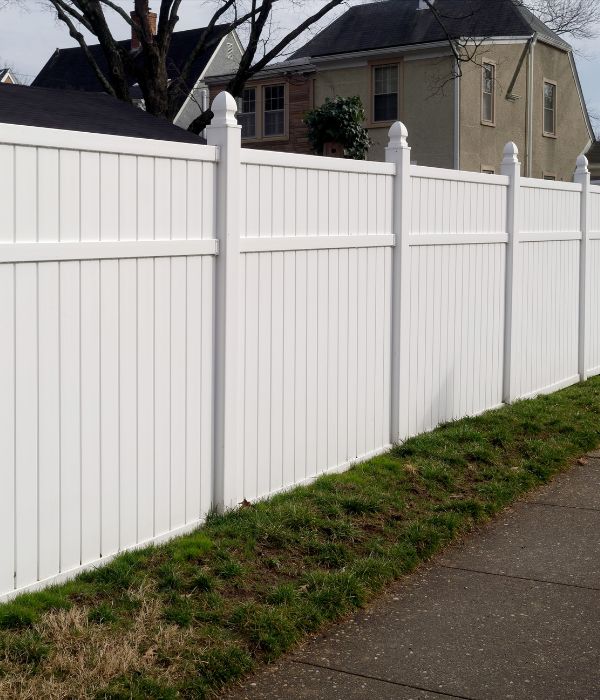How Cost-Effective Are Vinyl Fencing Solutions Compared to Wood?
What is Vinyl Fencing?
Vinyl fencing, a synthetic fencing option, has gained popularity for its durability and minimal maintenance requirements. Made primarily from polyvinyl chloride (PVC), this material resists the decay issues that often plague organic materials. Manufacturers have significantly expanded design options, offering a variety of colors, textures, and styles that mimic the look of wood without its susceptibility to environmental damages.

Traditional Wood Fencing
In contrast, wood fencing is a traditional choice that boasts natural beauty and easy customization. Different types of wood, including cedar, pine, and redwood, each come with their unique properties, affecting durability, resistance to rot and insects, and maintenance needs. However, this classic option requires a rigorous maintenance schedule to keep it attractive and structurally sound, significantly impacting its long-term cost-effectiveness.
Price Comparison: Vinyl vs. Wood
The initial cost of fencing materials can be deceiving. Vinyl generally demands a higher upfront cost than wood. However, considering the long-term perspective, the investment is often justified. The price difference varies based on fence style, height, and other specific features. It’s essential to consider these initial costs in the context of the product’s lifespan and ongoing maintenance expenses to understand the real value.
Installation Considerations
Installation complexity can also affect the overall cost. Wood fences sometimes have a lower installation cost because they’ve been a standard in the industry for years, and professionals are thoroughly familiar with the process. However, vinyl fencing, with pre-assembled panels and posts, can simplify and expedite installation, potentially reducing labor costs. The key is to ensure proper installation to avoid structural issues that could lead to additional expenses down the road.
Maintenance and Durability
Maintenance is a critical factor in assessing cost-effectiveness. Vinyl fencing requires little more than occasional washing to remove dirt and grime, significantly reducing upkeep costs. Conversely, wood fencing needs regular painting or staining, pest control, and repair of rot, warping, or splintering sections. These maintenance requirements can add up financially over the years, not to mention the time investment.
Durability directly influences a fence’s cost-effectiveness. Vinyl fences are known for their strength, maintaining their structure and appearance for many years without fading, cracking, or blistering. Wood, while robust initially, tends to show age and weather-related wear over time, potentially leading to more frequent replacements. The longer lifespan of vinyl often offsets its higher initial cost, presenting a more cost-effective solution in the long run.
Aesthetic Value and Property Impact
A fence’s appearance contributes significantly to a property’s overall aesthetic. Vinyl fencing offers a consistently clean and modern look, while wood provides a classic, organic charm. The versatility of wood is appealing as it can be cut, painted, or stained to a homeowner’s preference. However, vinyl has evolved to offer a variety of styles, some so closely resembling wood that they provide a similar aesthetic without the associated maintenance.
Beyond personal preference, fencing can affect property value. Well-maintained vinyl fencing can be an attractive feature for potential buyers, thanks to its low maintenance and long life. Wood fencing, especially if aged or weathered, might raise concerns about upkeep and longevity. Prospective buyers often look for homes that won’t saddle them with immediate maintenance projects, potentially making vinyl fencing a more attractive option.
Environmental Considerations
Sustainability is increasingly influencing consumer choices. Wood fences use a renewable resource but often require treatments that can be harmful to the environment. Additionally, sourcing wood ethically and sustainably can be challenging. Vinyl fencing, while not biodegradable, doesn’t require harmful chemical treatments. However, its manufacturing process and the fact that it’s a petroleum-based product raise environmental concerns.
End-of-life disposal is crucial in assessing environmental impact. Wood fencing can often be repurposed or used as biomass fuel, but if treated with chemicals, it can be harmful when burned or left to decay. Vinyl, while not traditionally recyclable in curbside programs, can be recycled through specialized facilities, though it often ends up in landfills. Consumers are encouraged to consider these environmental costs as part of their fencing material’s overall cost-effectiveness.
Deciding between vinyl and wood fencing involves considering various factors, including initial costs, maintenance, durability, aesthetics, and environmental impact. While vinyl might have higher upfront costs, its low maintenance and long lifespan present a cost-effective solution for homeowners looking for long-term savings and convenience.
For those ready to invest in a durable, cost-effective fencing solution, contacting a reputable provider is the next step. Fortress Fencing Inc. specializes in high-quality fencing solutions, offering expert guidance tailored to your property’s needs and your budget. Their experience and commitment to customer satisfaction make them an ideal partner in enhancing your property’s value and aesthetic appeal.
Boundaries Set,
Worries Met!
[Contact Us Today for Chain Link Fence Installation]


